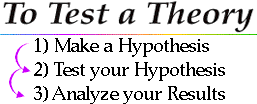
The goal of this section, the Experimental Evidence Path, is to show you the tools physicists use to test and refine their hypothesis of the Standard Model.
First, we will see how an early physics experiment performed by Rutherford, Geiger, and Marsden demonstrated that atoms have a small charged nucleus. This experiment is an example of how physicists collect and analyze data, test their hypotheses, and develop new theories.
Then, we will explain the modern tools physicists use to probe nuclear and sub-nuclear matter -- accelerators . You will have the chance to explore the world's largest accelerators, at SLAC, Fermilab, CERN, and other places.
Finally, we will discuss how physicists measure the results of their experiments using detectors.